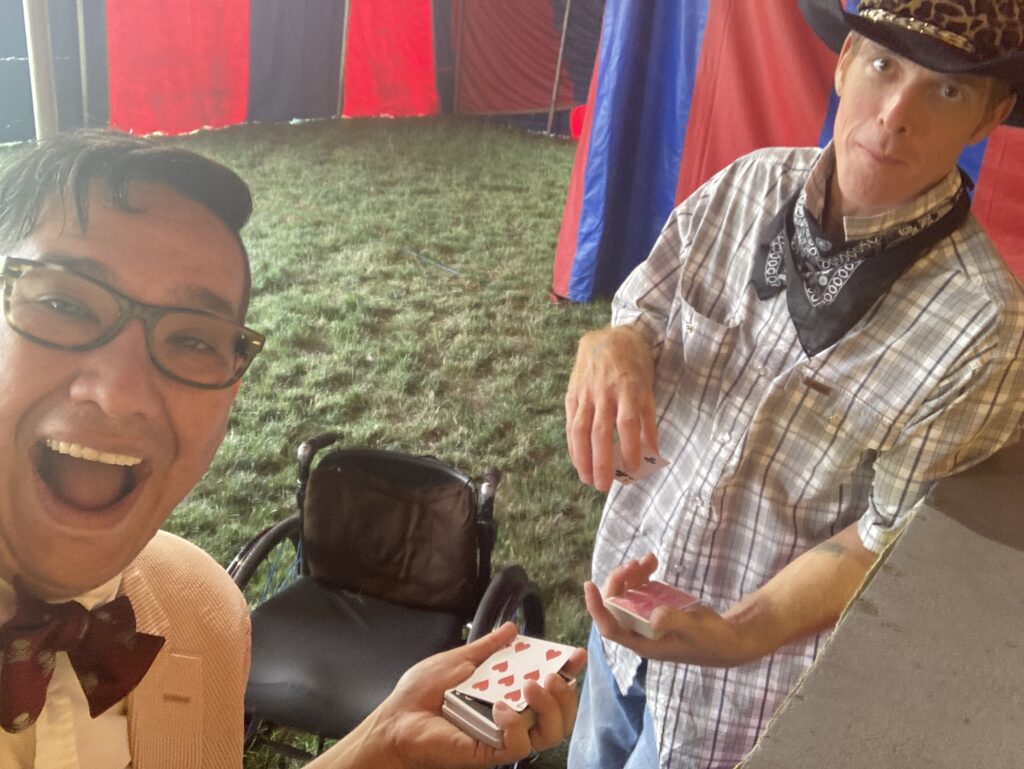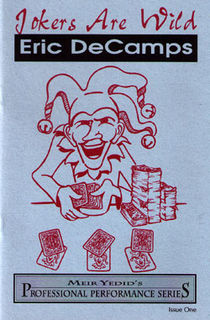Well, I was just on another long flight and I was playing with the Twisting the Aces that uses the false count of four cards that hides the card that is second from the top. I’ve been calling the count the Second From the Top Elmsley Count, but I think I’m going to call it the Runner Up Count as it deals with the “second place”
Click here for the routine for Twisting the Aces
While I was on the flight, I got to thinking about how I bet the spectator doesn’t really remember which aces have flipped over and which haven’t. What I mean by that is if you stopped in the middle of the trick and asked which two aces haven’t flipped over, I think most people couldn’t tell you. That’s a problem with the Twisting the Aces premise, the audience is taking your word at what’s flipped or hasn’t flipped.
While I was on the plane I started to play around with the handling to be able to do it with an Ace – 2 – 3 -4 instead of four aces. Luckily I was able to do that with pretty minimal changes to the handling.
Here’s the handling, and the changes have been added in bold:
You start with an Ace, Two, Three and Four in that order face down in your left hand.
GET READY: Have the cards in a fan and gesture towards a person from the audience. As you do the gesture, your right hand takes the top two cards and the bottom card, leaving the second from the bottom card in the left hand. Your right hand then sets it’s cards on top of the single card in the left hand.
- Triple turn over to show the “top card”.
- Kill your wrist and turn just the top card over.
-The position of the cards are: face down – face up – face up – face down
- Do the “Thru the Fist Flourish”, but don’t flip over the packet.
- Do the Runner Up Count and this will show the first face up ace. When you count the fourth card, DO NOT put it on top of the packet in the right hand, but but under the top card.
- Do the “Thru the Fist Flourish”, but don’t flip over the packet.
- Do a regular Elmsley and this will show the second face up ace.
-The position of the cards are: face down – face up – face down – face up
- Do the “Thru the Fist Flourish”, and secretly flip over the packet.
- Do the Runner Up Count and this will show the third face up ace.
- Do the “Thru the Fist Flourish”, but don’t flip over the packet.
- Do the Runner Up Count and this will show the fourth face up ace.
As you do the count, leave the final ace out jogged.
- Strip out the final ace and put it on top of the packet face up
- Half pass the bottom card as you spread out the packet to show the three face down bottom cards (this is the Asher Twist move)
That’s it, a simple displacement at the beginning of the trick and then one displacement after the first count and it will work with a set of cards in numerical order. While this is essentially still Twisting the Aces, I’m happier with this now that I was a few days ago.
-Louie




